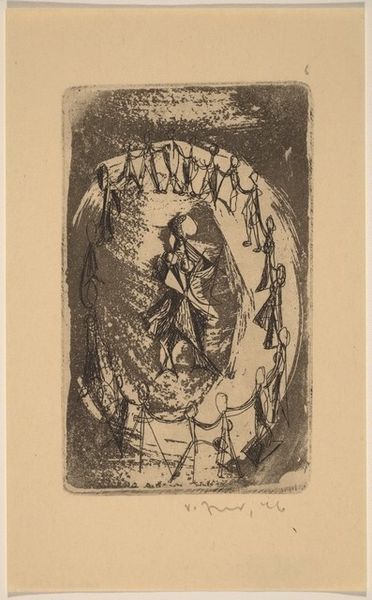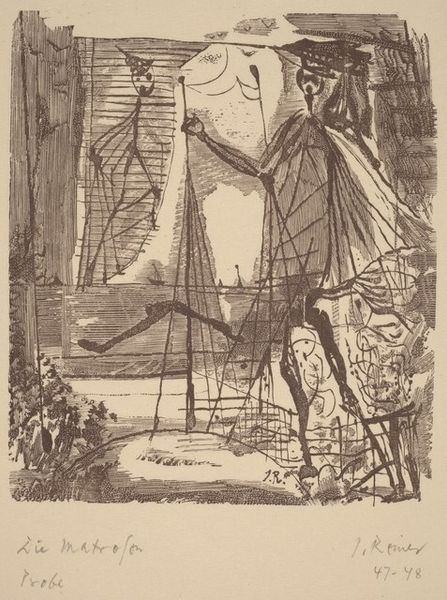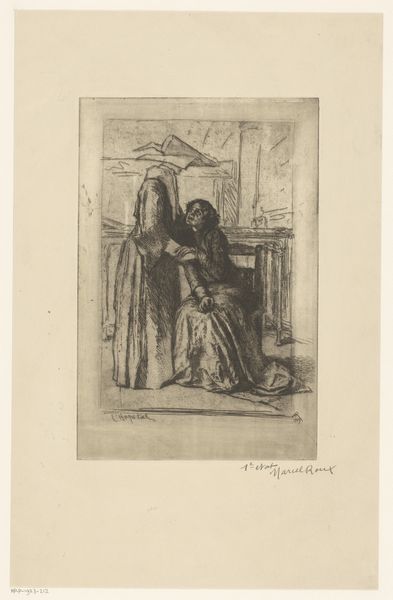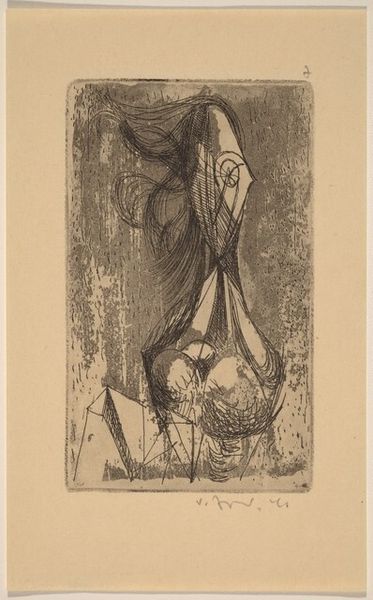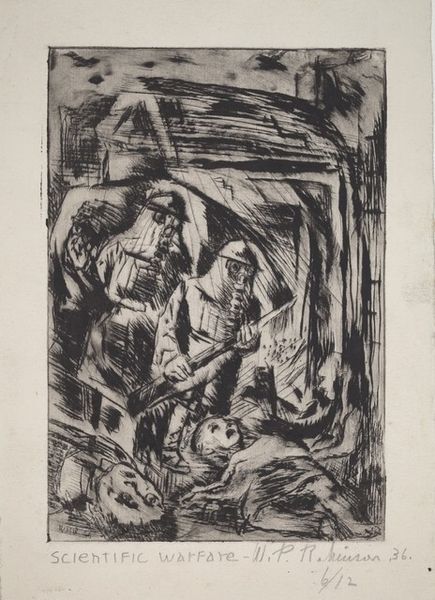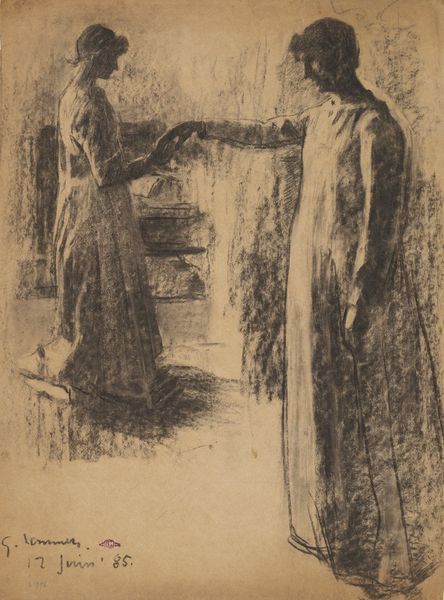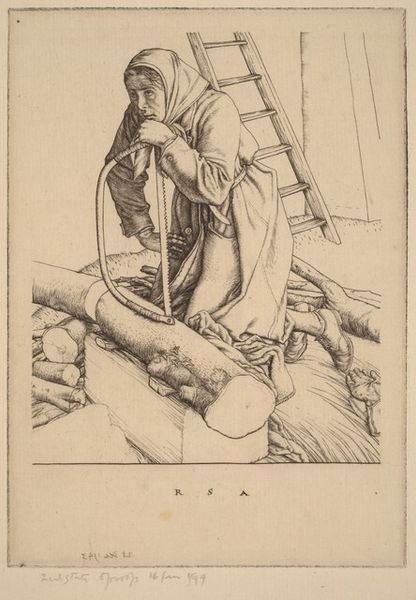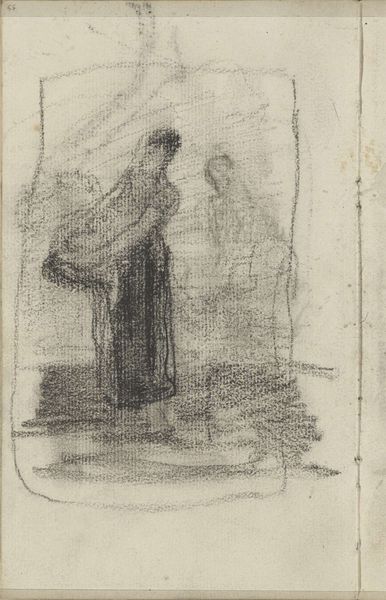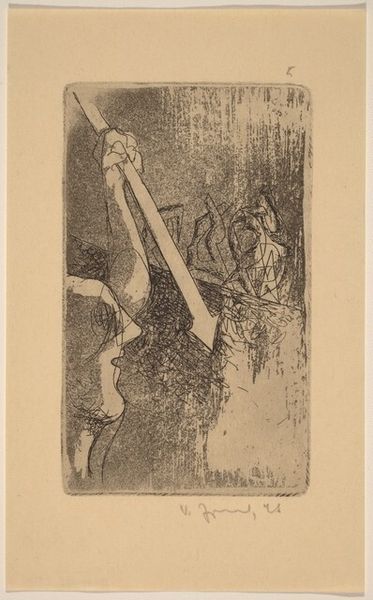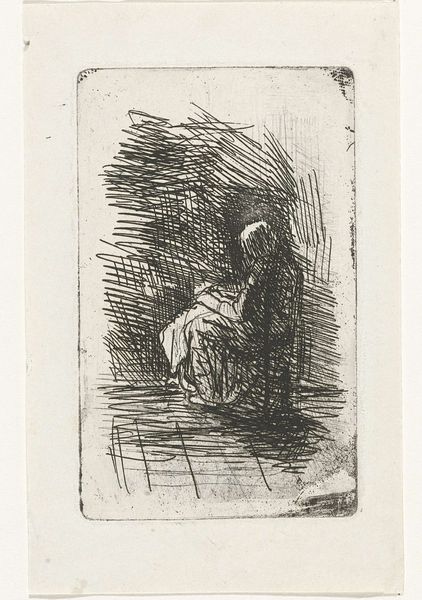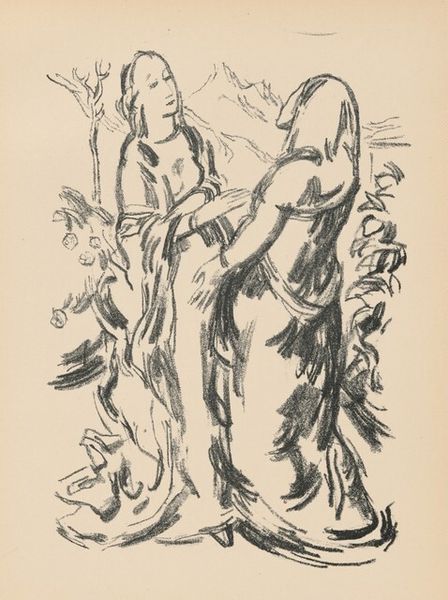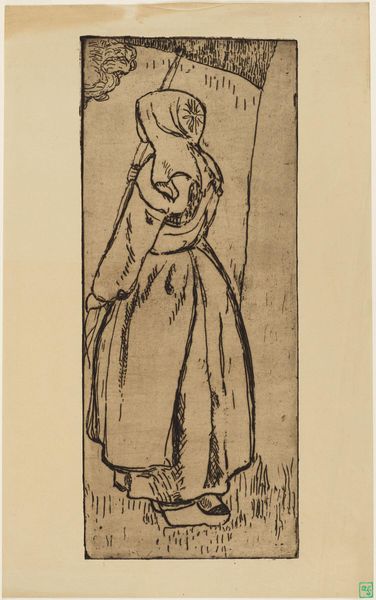
drawing, print, etching
#
portrait
#
drawing
#
ink drawing
#
narrative-art
# print
#
etching
#
figuration
Copyright: National Gallery of Art: CC0 1.0
Curator: Here we have Imre Reiner's “Illustration to Cervantes, Don Quixote,” likely created before 1941. It's an etching and print, primarily rendered as an ink drawing. What's your initial take? Editor: My first impression is one of somber drama. The stark black ink creates such a high contrast, a sense of weighty sorrow hangs in the air, wouldn't you agree? Curator: Absolutely. Reiner worked in a politically charged environment leading up to World War II, so this image could be viewed through the lens of social unrest. It almost anticipates the coming storm. I think about his career in Switzerland as an interesting choice, considering that so many german artists were being exiled as they tried to escape military conflict and ethnic persecution. Editor: Precisely! And consider the figure on the right. Enshrouded and monumental, they appear to be a kind of personification of mourning, evoking, of course, clear reference to the the Madonna and the passion narrative but, is Reiner implying more by showing figures hooded by a veil or a hat and face? I see how religious and spiritual elements that converge to talk about identity and personification within narrative works Curator: The use of religious imagery resonates profoundly. Don Quixote, after all, embarks on his own kind of holy quest, blurring the lines between the sacred and the absurd, between heroism and delusional madness. Perhaps Reiner hints at a critique of grand narratives in general, and how susceptible societies are to believing in false gods or flawed ideals. Editor: Indeed. Symbols shape our understanding and our memories. Notice also how he plays with shadow and depth. There’s an otherwordly quality about the space behind that cross… The overall symbolic intent has a timeless dimension, wouldn't you agree? It seems, the cross behind evokes not only Christian narrative, but alludes, through an ancient visual rhetoric, at personal or universal trauma. Curator: His style does suggest a certain universal pain. A very complex interplay of cultural symbols and personal angst—reflecting a deeply unsettling chapter of European history and life, perhaps. Editor: Ultimately, it is through this exploration that our understanding broadens, highlighting art's power as a window into not only historical eras but also into the depths of our shared humanity.
Comments
No comments
Be the first to comment and join the conversation on the ultimate creative platform.
